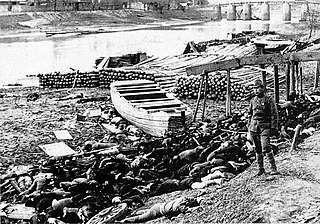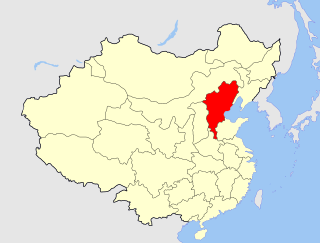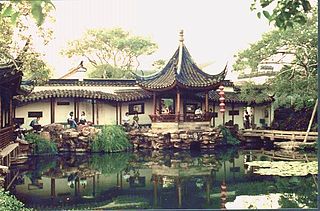Nanjing means "southern capital" and is the name of the current capital of Jiangsu Province and a former capital of China.
Contents
Nanjing, and romanizations Nanking, Nan-ching, and Nankin may also refer to:
Nanjing means "southern capital" and is the name of the current capital of Jiangsu Province and a former capital of China.
Nanjing, and romanizations Nanking, Nan-ching, and Nankin may also refer to:

Nanjing is the capital of Jiangsu province in eastern China. The city, which is located in the southwestern corner of the province, has 11 districts, an administrative area of 6,600 km2 (2,500 sq mi), and a population of 9,423,400 as of 2021. Situated in the Yangtze River Delta region, Nanjing has a prominent place in Chinese history and culture, having served as the capital of various Chinese dynasties, kingdoms and republican governments dating from the 3rd century to 1949, and has thus long been a major center of culture, education, research, politics, economy, transport networks and tourism, being the home to one of the world's largest inland ports. The city is also one of the fifteen sub-provincial cities in the People's Republic of China's administrative structure, enjoying jurisdictional and economic autonomy only slightly less than that of a province. It has also been awarded the title of 2008 Habitat Scroll of Honor of China, Special UN Habitat Scroll of Honor Award and National Civilized City. Nanjing is also considered a Beta city classification, together with Chongqing, Hangzhou and Tianjin by the Globalization and World Cities Research Network, and ranked as one of the world's top 100 cities in the Global Financial Centres Index.

The Nanjing Massacre or the Rape of Nanjing was the mass murder of Chinese civilians in Nanjing, the capital of the Republic of China, immediately after the Battle of Nanking and the retreat of the National Revolutionary Army in the Second Sino-Japanese War, by the Imperial Japanese Army. Beginning on December 13, 1937, the massacre lasted six weeks. The perpetrators also committed other war crimes such as mass rape, looting, torture, and arson. The massacre is considered to be one of the worst wartime atrocities.

The Five Dynasties and Ten Kingdoms period was an era of political upheaval and division in Imperial China from 907 to 979. Five dynastic states quickly succeeded one another in the Central Plain, and more than a dozen concurrent dynastic states, collectively known as the Ten Kingdoms, were established elsewhere, mainly in South China. It was a prolonged period of multiple political divisions in Chinese imperial history.
This is a list of historical capitals of China.

Jiangsu is an eastern coastal province of the People's Republic of China. It is one of the leading provinces in finance, education, technology, and tourism, with its capital in Nanjing. Jiangsu is the third smallest, but the fifth most populous, with a population of 84.75 million, and the most densely populated of the 23 provinces of the People's Republic of China. Jiangsu has the highest GDP per capita and second-highest GDP of Chinese provinces, after Guangdong. Jiangsu borders Shandong in the north, Anhui to the west, and Zhejiang and Shanghai to the south. Jiangsu has a coastline of over 1,000 kilometers (620 mi) along the Yellow Sea, and the Yangtze River passes through the southern part of the province.

Zhili, alternately romanized as Chihli, was a northern administrative region of China since the 14th-century that lasted through the Ming dynasty and Qing dynasty until 1911, when the region was dissolved, converted to a province, and renamed Hebei in 1928.

Zhenjiang, alternately romanized as Chinkiang, is a prefecture-level city in Jiangsu Province, China. It lies on the southern bank of the Yangtze River near its intersection with the Grand Canal. It is opposite Yangzhou and between Nanjing and Changzhou. Zhenjiang was formerly the provincial capital of Jiangsu and remains as an important transportation hub. As of the 2020 census, its total population was 3,210,418 inhabitants whom 1,266,790 lived in the built-up area made of the 3 urban districts. The town is best known both in China and abroad for Chinkiang vinegar, a fragrant black vinegar that is a staple of Chinese cooking.

Jiangnan is a geographic area in China referring to lands immediately to the south of the lower reaches of the Yangtze River, including the southern part of its delta. The region encompasses the city of Shanghai, the southern part of Jiangsu Province, the southeastern part of Anhui Province, the northern part of Jiangxi Province and the northern part of Zhejiang Province. The most important cities in the area include Anqing, Changzhou, Hangzhou, Nanjing, Ningbo, Shaoxing, Suzhou, Wuxi, Wenzhou, Yangzhou and Zhenjiang.
Nankin may refer to:
The Truth About Nanjing is a 2007 film by Japanese far right filmmaker Satoru Mizushima that is widely considered to advocate for denial or revisionism of the 1937 Nanjing Massacre.

The Memorial Hall of the Victims in Nanjing Massacre by Japanese Invaders is a museum to memorialize those that were killed in the Nanjing Massacre by the Imperial Japanese Army in and around the then-capital of China, Nanjing, after it fell on December 13, 1937. It is located in the southwestern corner of downtown Nanjing known as Jiangdongmen (江东门), near a site where thousands of bodies were buried, called a "pit of ten thousand people".

Qixia District is one of 11 districts of Nanjing, the capital of Jiangsu province, China, straddling both sides of the Yangtze River.
Nanjing Massacre denial is the pseudohistorical claim denying that Imperial Japanese forces murdered hundreds of thousands of Chinese soldiers and civilians in the city of Nanjing during the Second Sino-Japanese War. This is relevant today in Sino-Japanese relations. Most historians accept the findings of the Tokyo tribunal with respect to the scope and nature of the atrocities which were committed by the Imperial Japanese Army after the Battle of Nanjing. In Japan, however, there has been a debate over the extent and nature of the massacre with some historians attempting to downplay or outright deny that the massacre took place.
The Historiography of the Nanjing Massacre is the representation of the events of the Nanjing Massacre as history, in various languages and cultural contexts, in the years since these events took place. This historiography is disparate and sometimes contested, owing to conflicting currents of Chinese and Japanese nationalist sentiment and national interest, as well as the fog of war.

Nanjing University (NJU) is a public university in Nanjing, Jiangsu, China. It is affiliated and sponsored by the Ministry of Education. The university is part of Project 211, Project 985, and the Double First-Class Construction. The university is a member of the C9 League.

Jinghai Temple is a 15th-century temple located in Nanjing, Jiangsu, China, to the southwest of Shizi Mountain. It was built to commemorate the voyage of Zheng He in the Ming Dynasty. The terms of the Treaty of Nanking were discussed in the temple. It was destroyed and rebuilt thrice, during the Taiping Rebellion and the Second Sino-Japanese War. In 1988, it was rebuilt on its original site. In 1990, the temple became home to the Historical Exhibition Museum of the Treaty of Nanking. After two expansions in 1996 and 2005, it is now the Nanjing Jinghai Temple Memorial, with material related to both Zheng He's voyage and the Treaty of Nanking. It is a National 4A Level Scenic Spot, as well as part of the National Patriotism Education Base, and the Nanjing Relic Protection Unit.
Nanjing Incident may refer to:
The following is a timeline of the history of the city of Nanjing, Jiangsu Province, China.

Jiangnan, formerly romanized as Kiangnan, was a historical province of the early Qing dynasty of China. Its capital was Jiangning, from which it is sometimes known as Nanjing or Nanking Province. Established in 1645 during the Qing conquest of Ming, it administered the area of the earlier Ming province of Nanzhili, reaching from north of the Huai River—at the time the course of the Yellow River—to south of the Yangtze River in East China. Its territory was later divided into the separate provinces of Jiangsu and Anhui during the reign of the Qianlong Emperor (1736–1795), although the exact timing is disputed, with Jean-Baptiste Bourguignon d'Anville's map of 1734 showing the province still extant as "Kiang-nan". The earliest that the province's partition could have happened was 1667. Under the Republic and People's Republic of China, an area of Jiangsu also became the provincial-level municipality of Shanghai.

Nanzhili, formerly romanized as Nan-chih-li and also known as South or Southern Zhili or Chih-li, was a historical province of the Ming Empire. Its capital was Nanjing, from which it is also sometimes known as Nanjing or Nanking Province. Nanzhili combined areas of the Yuan provinces of Henan Jiangbei and Jiangzhe and took its name—Chinese for "Southern Directly Administered Area"—from Nanjing's status as the Ming's national capital under the Hongwu Emperor and as the secondary capital after the Yongle Emperor's move to Beijing, which oversaw Beizhili or the Northern Directly Administered Area. During the early Qing Dynasty, Nanzhili was renamed Jiangnan and then divided into the separate provinces of Jiangsu and Anhui. Under the Republic and People's Republic of China, an area of Jiangsu also became the provincial-level municipality of Shanghai.